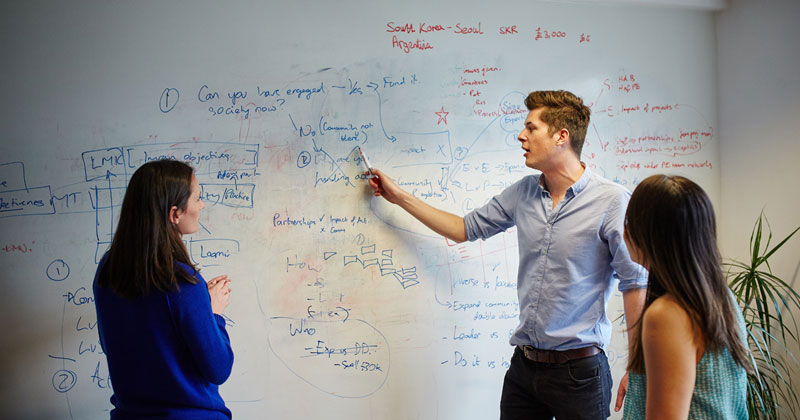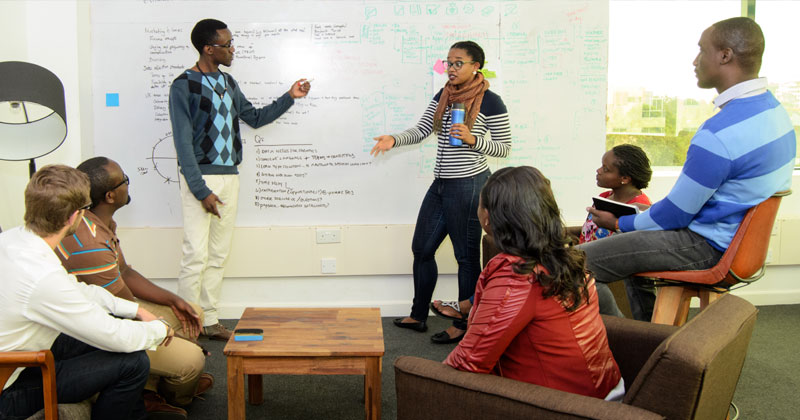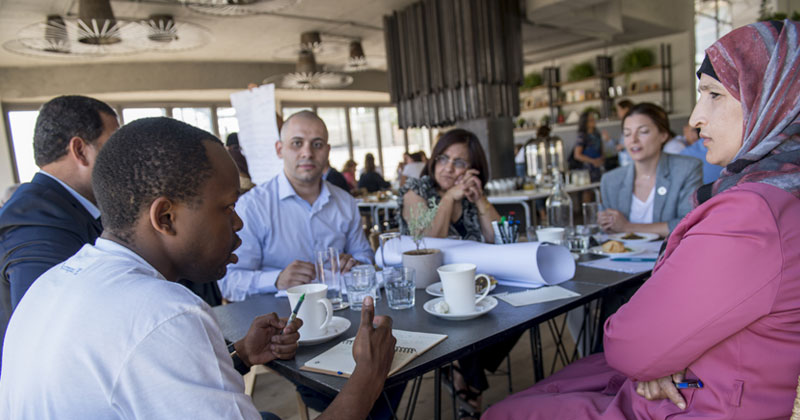Dalberg uses cookies and related technologies to improve the way the site functions. A cookie is a text file that is stored on your device. We use these text files for functionality such as to analyze our traffic or to personalize content. You can easily control how we use cookies on your device by adjusting the settings below, and you may also change those settings at any time by visiting our privacy policy page.
Thank you for your interest in Dalberg. The resources below will help you prepare for your consulting case interview with Dalberg Advisors.
For interviews with other Dalberg businesses and Operations roles, the respective recruiting lead will share details on the interview format, as it may vary based on the role you are applying for.
WHAT WE LOOK FOR
Dalberg is a mission-driven organization, (see our mission and our manifesto) and we are looking for people who put impact first. While there is no specific formula for success at Dalberg Advisors, here are a few qualities that help us create positive change in collaboration with our clients and partners.
-

We are dynamic problem solvers
We are creative thinkers who can effectively work through difficult challenges, and reframe problems as possibilities.
-

We value teamwork
We bring together diverse teams, and we seek to build collaborative, inclusive environments within our own firm and across our partner engagements.
-

We are effective communicators
We develop clear, compelling narratives for a wide range of audiences.
-

We share a commitment to social impact
We are passionate about making a difference and well-informed about major trends in the development sector.
-

We are entrepreneurs
We are not afraid to forge new paths, and we strive to create innovation and sustainable growth across all that we do.
At Dalberg, we take a fresh approach to every challenge we enter into. We are both problem solvers and partners, and while much of what we do may sound like typical management consulting, our work is always tailored to the issue at hand.
Three major differences illustrate why our approach is different from what might be found in a traditional strategy consulting firm:
The problems we work on are systemic and often seem intractable. We seek out the world’s most pressing challenges and work in partnership with collaborators and clients who can help to make significant progress in overcoming them. These problems persist precisely because of their complexity. As such, we typically cannot apply existing frameworks or approaches to develop recommendations.
Solutions are never within the full control of our clients alone.The problems we work on typically involve complex, socio-economic issues that cut across traditional sectors and geographies. As a result, numerous stakeholders across the public, private, and social spheres are often involved. The solutions we develop require cooperation and collaboration from numerous organizations and people. Because of this, our problem-solving approach is more participatory and partnership-oriented.
We work in data-scarce environments. More often than not, we are working in places and on problems where data quality and quantity is limited. Our approach involves rigorous consideration of how we can work with new and existing data sources to paint a holistic picture. We seek to understand the strengths and limitations of these sources, and triangulate the information on hand to develop informative estimates. On-the-ground knowledge and networks are a core part of many data collection undertakings, giving our consultants unparalleled access to high-level stakeholders. In addition, we are playing an increasingly active role in collecting and accessing the data needed to inform our clients’ decision-making ourselves through our Dalberg Design, Dalberg Research, and Dalberg Data Insight businesses.
At Dalberg Advisors, in addition to questions on your experience and background, we use case interviews to test your problem solving skills. The information below provides tips and tricks on this component of the interview.
Consultants are continually asked to analyze complex, often ambiguous problems and then develop recommendations. The case interview is designed to show us the way you would approach this thought process. The cases that follow provide an opportunity to work through the challenges we address each day and to showcase your problem-solving skills.
Case interview structure
Case interviews can be broken into five key sections: 1) Understand the question; 2) Structure the approach; 3) Analyze the logical components; 4) Quantify the analysis, and; 5) Synthesize the output. Cases may go deeper in one area, or section order may slightly shift, but all cases will look to test the five elements described above.
Understand the Question
The interviewer will first provide an overview on the case and a problem statement. At this stage you should:
- Ensure you understand the problem clearly by asking clarifying questions (note: some context may be intentionally omitted in the beginning, and not all information provided will be relevant)
- Generate a quick understanding of the situation, complication, and key question to answer
Structure the Approach
In this section, you develop a solid framework to solve the case, breaking the problem down into discrete components. A good framework will:
- Build a strong, mutually exclusive and comprehensively exhaustive (MECE) framework, where all branches of the tree are at the same level, with no overlap
- Understand the relationships between the components and problem statement
Analyze the Logical Components
This is your chance to form and share early hypotheses, generating ideas and asking questions to solve the case. A good analysis will:
- Continue working through a MECE framework, breaking it into components
- Develop hypotheses for each component, using prior experiences and judgment
- Clearly state all assumptions and unpack each assumption
Quantify the Analysis
Here, you conduct “back-of-the-envelope” calculations using numbers provided by the interviewer. You should:
- Conduct quick estimates, using sense checks to verify the order of magnitude
- Use the numbers to develop conclusions and support / disprove their hypotheses
- Show strong mathematical reasoning that is easy to follow
Synthesize the Output
With the analysis in hand, you synthesizes and summarize recommendations with supporting insights. Good practices are to:
- Take a second to recap the clear and logical process followed, and all relevant facts, which they will synthesize with insights
- Ask the “So what?”, understanding what this analysis tells us, and where we need to go from there (i.e. what additional work should be done as a result of this)
TIPS & TRICKS
- Treat the case like a conversation or a problem-solving session with a teammate. Ask questions throughout, especially if you don’t understand key terms or concepts.
- Structure your notes to highlight key points throughout the case so you can easily refer back to them in the synthesis.
- Signpost. Number the components of your structure and verbally track them (e.g., “first….” “in the second category…,”) so your interviewer can follow your framework and logic.
- Take the time to create a framework that organizes your thoughts – your interviewer is looking for structure, so don’t dive in immediately with a list of your top-of-mind thoughts.
- Solve the problem with the interviewer, focusing on the content, not just the process. Avoid describing a process for how one might go about solving the problem (e.g., first I would do XYZ research, then I would analyse ABC data); instead describe the process you will use, and then work through it.
- Share your thinking as you go so that your interviewer can evaluate your thought process – don’t work out the problem by yourself and come back with an answer without an explanation of how you got there.
- Don’t be afraid to have a perspective. You may not be 100% sure of the answer, but put a stake in the ground and back it up with logic and evidence from the case conversation.



